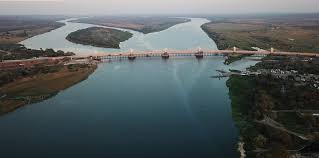
Essay on “River Linking Projects”(200,300,400, word’s)
ng is the linking of two or more rivers by creating a iver linking R network of manually created canals and providing water to land areas that otherwise do not have river water access. River linking projects is the new rage in Indian administrationes
The Indian rivers inter-link is a proposed large-scale civil engineering that aims to link link India’s rivers by a network of canals to reduce persistent floods in some part water shortages in other parts of the country. of
The inter-link project has been split into three parts – a Northern Himalayan rivers inter-link component, a Southern Peninsular component and starting 2005, an intrastate rivers linking component.
The project is being managed by India’s National Water Development Agency (NWDA) under the Ministry of Water Resources. The proponents of the project claim that it is the saviour of the pending water crisis in India.
It will revitalise the ailing irrigation system of the country and channelise the precious resource from where it is in abundance to areas where it is scarcely present. Policy-makers believe that it will also generate power to the tune of 34,000 MW with the added benefits of flood control and drought prevention.
The national perspective plan envisions about 150 million acre feet of water storage by building inter-links. These inter-links will add sufficient water for beneficial uses in India. There are various inter-link projects proposed like Krishna-Pennar link, Yamuna-Rajasthan link, Bedti Varda link etc.
However, so far only the Ken-Betwa link is the project for which the detailed report has been prepared. Approved in 2005 By Union Water Ministry and the States of Madhya Pradesh and Uttar Pradesh, the Ken-Batwa project plans to transfer water from the Ken in Madhya Pradesh to the Betwa in Uttar Pradesh through a 231.45 km-long canal.
However, despite the benefits from river linking, some activists and scholars claim that there are knowledge gaps between the claimed benefits and potential threats from the environment and ecological impact.
Scholars believe that the uncertainty regarding how much water will be shifted might lead to water-logging, salinisation and the resulting desertification in the command areas.
Besides, water storage and distributed reservoirs might displace people who rely on fishery for their livelihood as aquatic ecosystems will migrate from one river to another. However, the Centre firmly believes that the benefits from the project far outweigh its costs and is working towards its implementation in full vigour.













